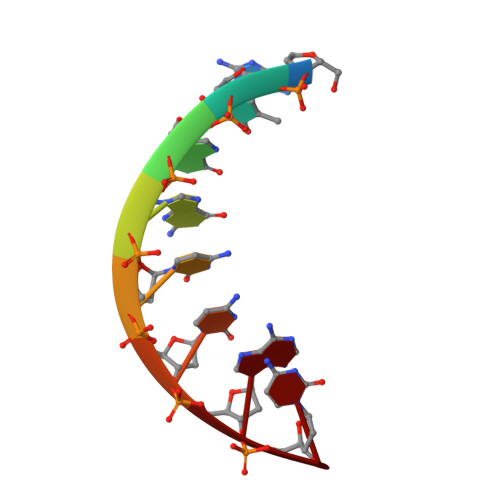Temperature-Induced Replacement of Phosphate Proton with Metal Ion Captured in Neutron Structures of A-DNA.
Vandavasi, V.G., Blakeley, M.P., Keen, D.A., Hu, L.R., Huang, Z., Kovalevsky, A.(2018) Structure 26: 1645
- PubMed: 30244969
- DOI: https://doi.org/10.1016/j.str.2018.08.001
- Primary Citation of Related Structures:
6D4L, 6D54 - PubMed Abstract:
Nucleic acids can fold into well-defined 3D structures that help determine their function. Knowing precise nucleic acid structures can also be used for the design of nucleic acid-based therapeutics. However, locations of hydrogen atoms, which are key players of nucleic acid function, are normally not determined with X-ray crystallography. Accurate determination of hydrogen atom positions can provide indispensable information on protonation states, hydrogen bonding, and water architecture in nucleic acids. Here, we used neutron crystallography in combination with X-ray diffraction to obtain joint X-ray/neutron structures at both room and cryo temperatures of a self-complementary A-DNA oligonucleotide d[GTGG(C Se )CAC] 2 containing 2'-SeCH 3 modification on Cyt5 (C Se ) at pH 5.6. We directly observed protonation of a backbone phosphate oxygen of Ade7 at room temperature. The proton is replaced with hydrated Mg 2+ upon cooling the crystal to 100 K, indicating that metal binding is favored at low temperature, whereas proton binding is dominant at room temperature.
Organizational Affiliation:
Neutron Scattering Division, Neutron Sciences Directorate, Oak Ridge National Laboratory, Oak Ridge, TN 37922, USA.















